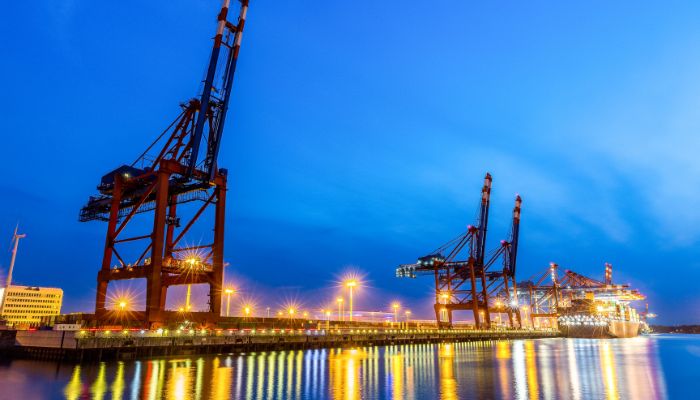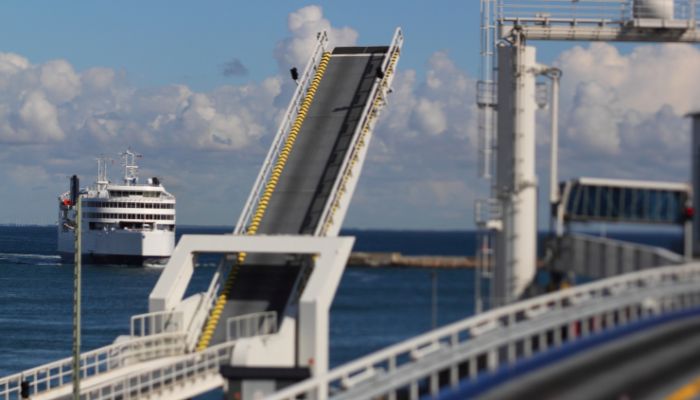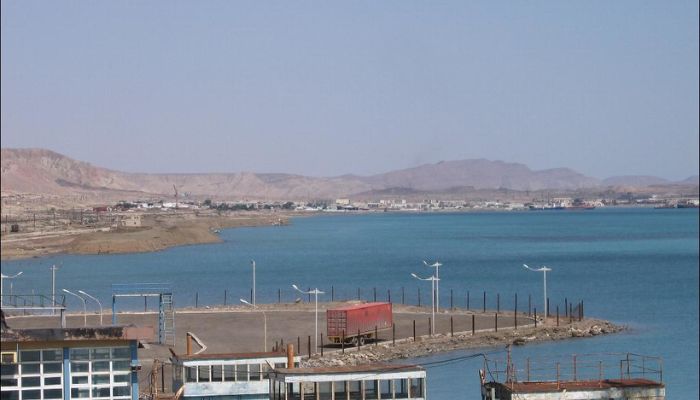Major Ports In Turkmenistan
Turkmenistan is a landlocked nation in Central Asia surrounded by Kazakhstan towards the northwest. To the north and east lies Uzbekistan; Afghanistan makes the southeastern border, while the Caspian Sea encloses it from the west.
It is one of the most sparsely populated countries in Asia and possesses the fifth-largest natural gas reserves in the world. It also has substantial reserves of oil.
Turkmenistan is well-connected to the other neighbouring countries through railways, air and waterways. The main commercial port is Turkmenbashi which also serves as the principal passenger port.
Mentioned below are the major ports and terminals in Turkmenistan.
1. Port of Turkmenbashi
The international seaport of Turkmenbashi is the largest harbour and the main cargo and passenger port in Turkmenistan. It is situated on the eastern coast of the Caspian Sea and has a ferry terminal connecting the cities of Baku in Azerbaijan, Aktau in Kazakhstan and Astrakhan in Russia.
It has great geopolitical significance in Eurasia as it lies on the Europe-Caucasus-Asia trade route. It welcomes ships all year round and is referred to as a ‘sea gate’ joining Central Asia and Europe by sea, roads and railways. It is also a major transit centre.
The port was established in 1896, and in 1903, the Merchant Marine Port Authority came into existence. Since then, there have been many upgrades in port infrastructure and functioning.
Turkmenbashi International Seaport covers 150 hectares and can handle 17 million tonnes of cargo annually.
It has a total quay length of 1800 m, enabling it to handle 17 cargo and passenger ships at once. It has 141121,72 m2 of open warehouse space and closed warehouses covering 58059,14 m2.
The port has five specialised terminals described below.
General Cargo Terminal
Covering 261,000 m2, the general cargo terminal is divided into outdoor and indoor sections. The former has a warehouse space of 26,394 m2 for keeping cotton and other fabric which cannot be kept outside. The 75,000 m2 outdoor space is utilised for keeping metals and metal products.
It has the longest wharf covering 625 metres, designed to handle 5000 DWT ships simultaneously. The terminal has an annual capacity of four million tonnes.

The terminal operations are automated, and operating systems can supervise and control the loading and unloading operations of four vessels simultaneously. They have boosted port performance and streamlined terminal operations.
There are three warehouses in the terminal area. The first warehouse spans 8650 m2 and has a ramp for loading and unloading goods from wagons and cars. The second one covers 5900 m2, and the third one has an area of 4000 m2, of which a part is used for storing flammable materials, and the other is made as a cold storage facility.
Bulk Cargo Terminal
Turkmenistan has well-developed industrial and chemical sectors. It exports bulk commodities like carbamide, potassium and cement to overseas markets. The logistics operations are handled by the bulk cargo terminal of Turkmenbashi port.
The terminal has a total area of 180,000 m2 and is the only one designed for bulk goods in the region. It has adequate equipment for handling bulk products used in chemical and agro-based industries.
The terminal wharf is 440 m long and can handle three 5000 DWT ships simultaneously. Its annual capacity is three million tonnes, and it has special equipment for storing grains, cereals, animal feed, chemical products and cement.
There are 14 silos with a total volume of 35,000 m3 and eight silos for storing 6000 m3 of cement. Bulk cargoes are loaded from vessels to containers and from containers to ships via conveyor systems and ship loaders.
The terminal has a bucket-crawler crane and three bucket cranes on steel rails. It has two cargo discharge points for trucks and railway wagons with a capacity of Loading/unloading 650 tonnes in 60 minutes. It also has an 8500 m2 closed warehouse for storing certain chemical products.
Container Terminal
The container terminal of Turkmenbashi port covers 249,000 square metres. It has a capacity for 400,000 TEUs annually. With a wharf length of 480 m, it loads and unloads three container ships at once.
It has two STS cranes for handling containers weighing up to 40 tonnes. Containers unloaded from vessels are carried to the general container area through railway wagons or vehicles on six-wheeled bridged cranes and two bridge cranes on steel rails. Around 22 trucks with a carrying capacity of 50 tonnes and 25 tonnes are deployed at the facility.
Containers arriving at the terminal are stored in a container yard capable of keeping 9100 units. It also has two empty container stackers and six loaded container stackers. Two closed warehouses spanning 9980 square metres are found near the wharf.
Polypropylene terminal
The terminal serves the Gas Chemical Complex founded by the President for producing around 386,000 tonnes of polyethene and 82,000 tonnes of polypropylene yearly in Gyyanly on the Caspian coast.
These two are the most important petroleum products produced in the Turkmenbashi Oil Refinery complex, and there is a great demand for them in the international market.
About 120,000 tonnes of polypropylene would be shipped annually from the International Polypropylene terminal after the expansion is completed. The terminal currently occupies 62,000 square metres and has 12,000 m2 of closed warehouse space.
Ferry Terminal
The passenger terminal spans 230,000 square metres and can accommodate four ships with 5000 DWT. It serves about 300,000 passengers and 75,000 trailers each year.
The passenger terminal is modern, with shining tinted glass windows and gold trim. It is designed to accommodate 800 people and has a migration and passport control system. The facility is equipped with the latest automated technologies and VIP waiting rooms.

Close to the terminal is a hotel where passengers and crew can relax. The port also has a beautiful park with a panoramic view of the waterfront for walking and recreation. There are shopping complexes, an entertainment centre, a children’s play centre, internet cafes, restaurants and bars.
Oil loading terminals
The Turkmenbashi international seaport has Kenar, Alaja and Ekerem port points for exporting oil and oil products.
Kenar was constructed in 1965 and 1966. The canal is seven kilometres long and a hundred metres wide. It has two berths and can accommodate four ships at once.
Alaja lies in the Balkan province in western Turkmenistan on the Caspian Sea. It is an oil-loading facility. It was built in 1972 and spans over five kilometres. It welcomes two oil tankers simultaneously.
Ekerem is a tiny city in the Balkan province in the western part of Turkmenistan on the coast of the Caspian Sea. It is an oil-loading terminal for the shipment of liquid petroleum goods. It was constructed in 1960-1962. The canal is 3.4 kilometres long and 70 metres wide. It can accommodate two tankers.
Also, the Okarem-Beyneu Gas Pipeline is a thousand-kilometre-long gas pipeline that runs from this port through Balkanbat to Tenge and Beyneu in Kazakhstan. It has been operational since 1974 and is owned by the government of Turkmenistan.
The Chelekan Port is connected to the two offshore oil and gas fields, the Dzheitune and Dzhygalybeg. The former lies at a water depth of 8 metres and the latter at 42 metres in the eastern part of the Caspian Sea.
They cover 950 square kilometres and are operated by Dragon Oil. Both sites have old and new wells producing around 79,000 barrels of oil daily, per 2014 figures.
You might also like to read-
Disclaimer: The authors’ views expressed in this article do not necessarily reflect the views of Marine Insight. Data and charts, if used, in the article have been sourced from available information and have not been authenticated by any statutory authority. The author and Marine Insight do not claim it to be accurate nor accept any responsibility for the same. The views constitute only the opinions and do not constitute any guidelines or recommendations on any course of action to be followed by the reader.
The article or images cannot be reproduced, copied, shared, or used in any form without the permission of the author and Marine Insigh
Do you have info to share with us ? Suggest a correction

About Author
Zahra is an alumna of Miranda House, University of Delhi. She is an avid writer, possessing immaculate research and editing skills. Author of several academic papers, she has also worked as a freelance writer, producing many technical, creative and marketing pieces. A true aesthete at heart, she loves books a little more than anything else.
Latest Maritime Knowledge Articles You Would Like:
Subscribe To Our Newsletters
By subscribing, you agree to our Privacy Policy and may receive occasional deal communications; you can unsubscribe anytime.
















